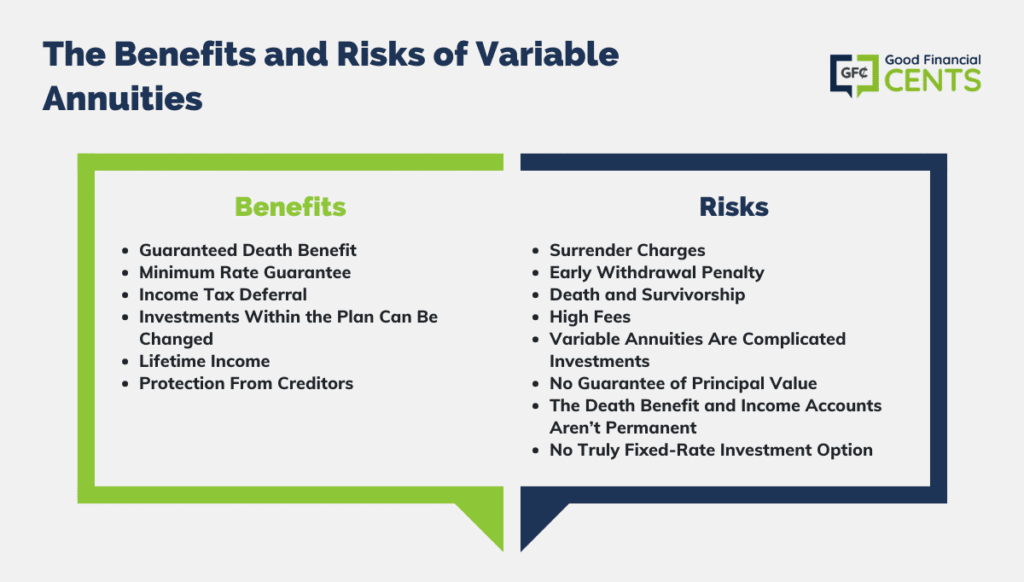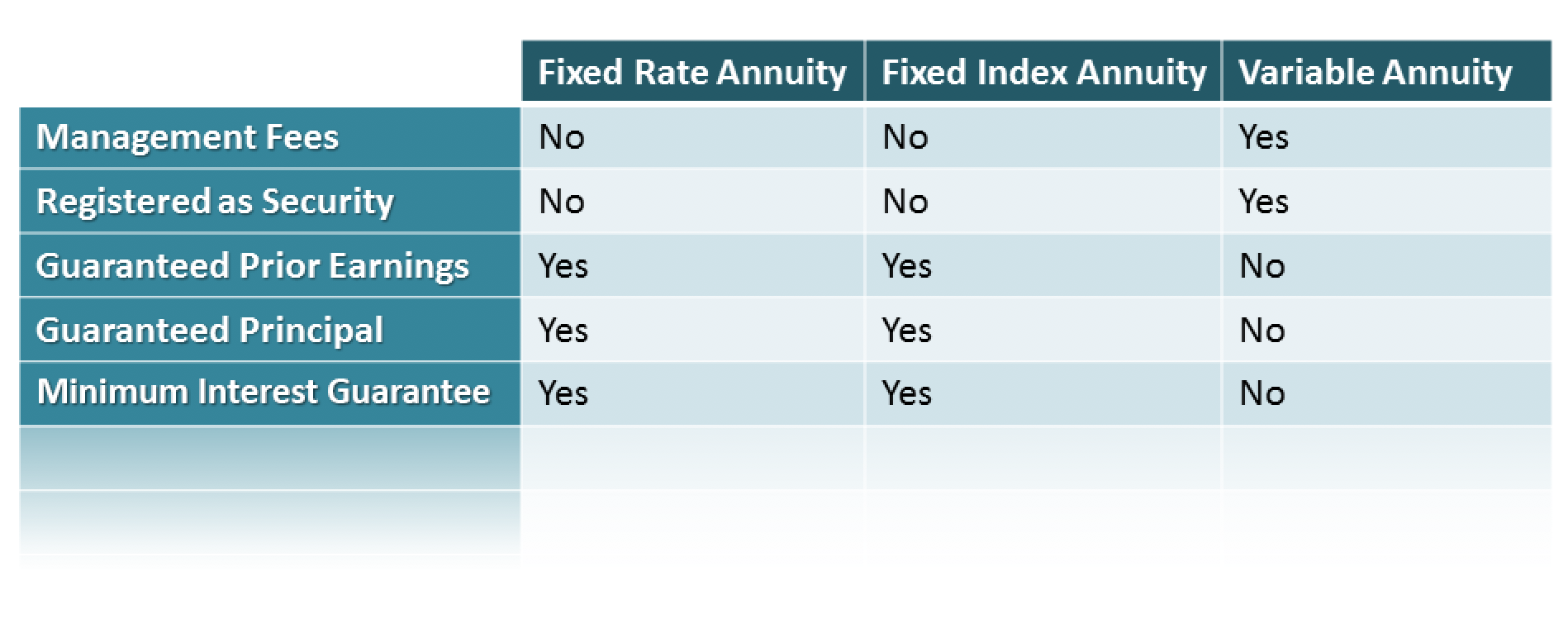All Categories
Featured
Table of Contents
Simply as with a repaired annuity, the owner of a variable annuity pays an insurance provider a round figure or series of payments in exchange for the guarantee of a series of future payments in return. However as discussed above, while a dealt with annuity grows at an assured, constant price, a variable annuity expands at a variable price that relies on the efficiency of the underlying financial investments, called sub-accounts.

During the accumulation phase, assets purchased variable annuity sub-accounts grow on a tax-deferred basis and are exhausted just when the agreement proprietor takes out those incomes from the account. After the buildup stage comes the earnings stage. Over time, variable annuity properties ought to in theory enhance in worth until the agreement owner decides he or she want to begin withdrawing money from the account.
One of the most significant problem that variable annuities typically present is high price. Variable annuities have numerous layers of costs and costs that can, in aggregate, produce a drag of up to 3-4% of the contract's worth every year. Below are one of the most usual costs associated with variable annuities. This expenditure compensates the insurance company for the danger that it presumes under the regards to the contract.
Understanding Financial Strategies Everything You Need to Know About Retirement Income Fixed Vs Variable Annuity Defining the Right Financial Strategy Benefits of Choosing the Right Financial Plan Why Fixed Income Annuity Vs Variable Growth Annuity Is a Smart Choice Annuities Fixed Vs Variable: A Complete Overview Key Differences Between Different Financial Strategies Understanding the Rewards of Retirement Income Fixed Vs Variable Annuity Who Should Consider Strategic Financial Planning? Tips for Choosing the Best Investment Strategy FAQs About Planning Your Financial Future Common Mistakes to Avoid When Planning Your Retirement Financial Planning Simplified: Understanding Fixed Vs Variable Annuity A Beginner’s Guide to Fixed Vs Variable Annuity A Closer Look at How to Build a Retirement Plan
M&E cost fees are computed as a percent of the contract worth Annuity companies pass on recordkeeping and other administrative expenses to the contract owner. This can be in the type of a flat yearly charge or a portion of the contract worth. Administrative charges might be included as component of the M&E risk cost or may be analyzed separately.
These fees can vary from 0.1% for easy funds to 1.5% or even more for actively handled funds. Annuity contracts can be personalized in a number of means to serve the certain demands of the contract owner. Some typical variable annuity motorcyclists include ensured minimal build-up advantage (GMAB), assured minimum withdrawal advantage (GMWB), and ensured minimal earnings advantage (GMIB).

Variable annuity payments offer no such tax obligation deduction. Variable annuities have a tendency to be very inefficient automobiles for passing wealth to the future generation since they do not enjoy a cost-basis change when the initial agreement proprietor dies. When the owner of a taxed financial investment account passes away, the price bases of the financial investments held in the account are gotten used to mirror the marketplace rates of those financial investments at the time of the proprietor's death.
Highlighting the Key Features of Long-Term Investments A Closer Look at Fixed Vs Variable Annuity Pros Cons Breaking Down the Basics of What Is A Variable Annuity Vs A Fixed Annuity Pros and Cons of Various Financial Options Why Choosing the Right Financial Strategy Is a Smart Choice How to Compare Different Investment Plans: Simplified Key Differences Between Different Financial Strategies Understanding the Risks of Choosing Between Fixed Annuity And Variable Annuity Who Should Consider Strategic Financial Planning? Tips for Choosing the Best Investment Strategy FAQs About Planning Your Financial Future Common Mistakes to Avoid When Choosing Fixed Index Annuity Vs Variable Annuity Financial Planning Simplified: Understanding Your Options A Beginner’s Guide to Smart Investment Decisions A Closer Look at How to Build a Retirement Plan
As a result, successors can inherit a taxed investment portfolio with a "fresh start" from a tax obligation viewpoint. Such is not the situation with variable annuities. Investments held within a variable annuity do not get a cost-basis modification when the original proprietor of the annuity passes away. This implies that any type of accumulated latent gains will be passed on to the annuity owner's heirs, in addition to the associated tax problem.
One significant problem connected to variable annuities is the potential for conflicts of interest that might feed on the part of annuity salesmen. Unlike an economic advisor, that has a fiduciary duty to make investment choices that profit the client, an insurance coverage broker has no such fiduciary responsibility. Annuity sales are extremely rewarding for the insurance policy experts who sell them due to the fact that of high upfront sales payments.

Numerous variable annuity agreements contain language which positions a cap on the portion of gain that can be experienced by certain sub-accounts. These caps stop the annuity owner from completely getting involved in a section of gains that might or else be appreciated in years in which markets create substantial returns. From an outsider's point of view, presumably that financiers are trading a cap on financial investment returns for the aforementioned guaranteed flooring on financial investment returns.
As noted above, give up fees can badly limit an annuity proprietor's capability to relocate possessions out of an annuity in the very early years of the agreement. Additionally, while the majority of variable annuities permit agreement proprietors to withdraw a specified amount throughout the build-up stage, withdrawals yet amount typically lead to a company-imposed fee.
Withdrawals made from a set rate of interest rate investment choice might likewise experience a "market price modification" or MVA. An MVA adjusts the value of the withdrawal to show any type of modifications in rates of interest from the time that the money was bought the fixed-rate choice to the moment that it was withdrawn.

Frequently, even the salespeople who sell them do not completely recognize how they function, therefore salespeople sometimes prey on a purchaser's feelings to sell variable annuities instead than the merits and viability of the products themselves. Our company believe that financiers should fully understand what they have and how much they are paying to possess it.
Analyzing Fixed Interest Annuity Vs Variable Investment Annuity A Closer Look at How Retirement Planning Works Breaking Down the Basics of Annuities Variable Vs Fixed Pros and Cons of Various Financial Options Why Choosing the Right Financial Strategy Can Impact Your Future Pros And Cons Of Fixed Annuity And Variable Annuity: Simplified Key Differences Between Different Financial Strategies Understanding the Risks of Fixed Index Annuity Vs Variable Annuity Who Should Consider Strategic Financial Planning? Tips for Choosing the Best Investment Strategy FAQs About Fixed Index Annuity Vs Variable Annuity Common Mistakes to Avoid When Planning Your Retirement Financial Planning Simplified: Understanding Fixed Vs Variable Annuity Pros And Cons A Beginner’s Guide to Smart Investment Decisions A Closer Look at Annuities Fixed Vs Variable
The very same can not be said for variable annuity assets held in fixed-rate investments. These assets lawfully come from the insurer and would certainly consequently go to threat if the business were to fail. Likewise, any type of guarantees that the insurer has actually agreed to give, such as an assured minimum income advantage, would certainly be in concern in case of a company failing.
Possible buyers of variable annuities must understand and think about the monetary problem of the providing insurance coverage company before getting in into an annuity agreement. While the benefits and drawbacks of various sorts of annuities can be disputed, the real problem bordering annuities is that of viability. In other words, the concern is: who should possess a variable annuity? This inquiry can be difficult to address, offered the myriad variants readily available in the variable annuity cosmos, however there are some fundamental standards that can assist investors make a decision whether or not annuities must play a duty in their financial plans.
Besides, as the stating goes: "Buyer beware!" This short article is prepared by Pekin Hardy Strauss, Inc. Tax benefits of annuities. ("Pekin Hardy," dba Pekin Hardy Strauss Wide Range Management) for informational purposes just and is not intended as an offer or solicitation for business. The details and data in this write-up does not constitute legal, tax, bookkeeping, financial investment, or other expert guidance
Table of Contents
Latest Posts
Breaking Down Your Investment Choices Key Insights on Variable Annuity Vs Fixed Annuity Defining Fixed Annuity Vs Equity-linked Variable Annuity Pros and Cons of Various Financial Options Why Choosing
Exploring the Basics of Retirement Options A Comprehensive Guide to Fixed Income Annuity Vs Variable Growth Annuity What Is the Best Retirement Option? Advantages and Disadvantages of Different Retire
Breaking Down What Is A Variable Annuity Vs A Fixed Annuity A Comprehensive Guide to Deferred Annuity Vs Variable Annuity What Is Pros And Cons Of Fixed Annuity And Variable Annuity? Pros and Cons of
More
Latest Posts